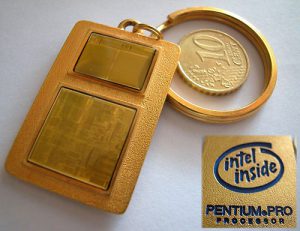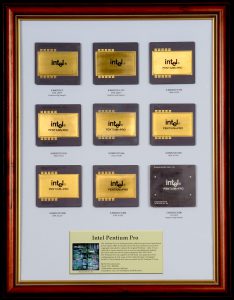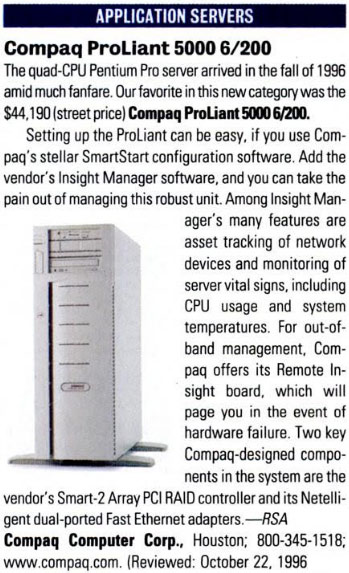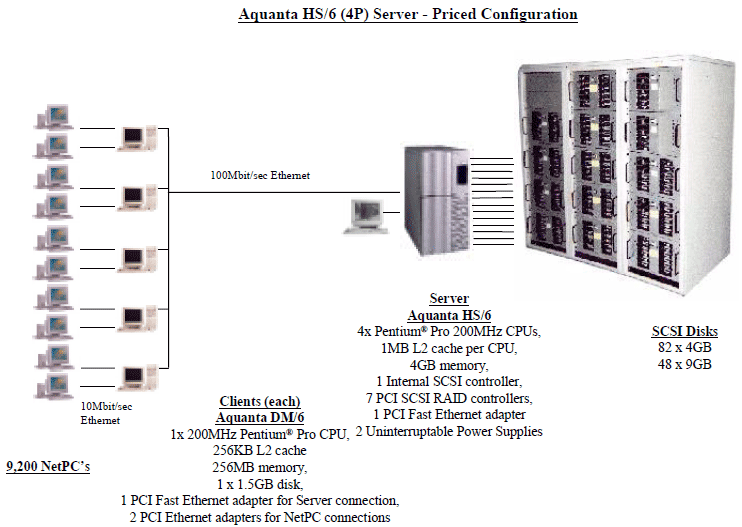

Part 1: Mini-Mainframe at Home: The Story of a 6-CPU Server from 1997
source link: http://www.cpushack.com/2019/01/12/mini-mainframe-at-home-the-story-of-a-6-cpu-server-from-1997/
Go to the source link to view the article. You can view the picture content, updated content and better typesetting reading experience. If the link is broken, please click the button below to view the snapshot at that time.

 Introduction
Introduction
This article/project is provided in cooperation with guest author max1024, hailing from Belarus. I have provided some minor edits/tweaks in the translation from Belarusian to English.
As part of this project, you will have a unique opportunity to learn about a mini mainframe worth more than a Ferrari, which had enormous power by the standards of 1997, as well as the intricacies of installing a more modern operating system on it and other interesting details. I think that to some readers, the bold name of the super server ALR Revolution 6×6 already says something, and it will be discussed in this article.
Alone, it would be simply not realistic for me to translate everything I had planned, without the help of my comrades from the United States, Russia and Great Britain, this project would have remained a project on paper, but their invaluable help would make it possible for the planned and almost forty kilograms of net weight (nearly 90lbs) to go a long way, more than 11 thousand kilometers (6800 miles) for three separate packages. The total distance as a result of which all the parts came together was 30 thousand kilometers (18,000 miles) – for reference, the circumference of the Earth is 40 thousand km. (~25,000 miles)), So this work is partly their merit, for which I am immensely grateful.
Editors Note: This ALR 6×6 came from the CPU Shack Museum, having sat in my house for some years. While chatting to Maksim last year he mentioned he would like to find one, so it was clearly meant to be. You can’t just ship an ALR 6×6 across the world to Belarus, at least not economically, so over several months I disassembled the entire server and shipped it in pieces to a mutual friend in Russia, who then forwarded it to Maksim in Belarus.
Before embarking on the initial part of the project, I’ll tell you that trying to understand Mainframes and supercomputers , I realized one thing that it’s quite possible to assemble even a “mini” mainframe at home, as Connor Krukosky did, but also overclocking would be even more interesting.
Studying such computational supermachines, I decided to dwell on systems consisting of Pentium Pro processors, so by installing Windows compatible applications and benchmarks, one could see how much the performance went ahead over the decades. Ideally, of course, it would be nice to get Intel ASCI Red, but I decided to start with its mini version.
Intel Pentium Pro Processors
The basis of any computers are central processors. Intel Pentium Pro processors were introduced to the public in 1995. At this time, there were the usual “Pentium” without the Pro suffix, but this suffix in the model name said that these processors are positioned primarily as solutions for servers and workstations. The main
difference between the Pentium Pro and the usual desktop counterparts was the presence of a second-level cache memory (L2), which worked at the processor core frequency, which significantly increased the overall performance. It also was the first x86 architecture that supported out of order execution, including speculative execution via register renaming, something that has become a bit infamous in recent times with the Spectre (and related) exploits.Different models of the Pentium Pro processors L2 cache was different, from 256 KB to 1 MB. L1 Cache memory in ordinary Pentium and Pentium Pro compared to the large L2 cache size seemed tiny and was only some 16 KB, of which 8 KB was intended for data and 8 KB for instructions (the later Pentium MMX bumped this up to 32KB). Let me remind you that the following Intel Pentium-II second-level cache (512KB) worked at only half the processor core frequency whereas the Pentium Pro was a full speed on package cache.
Originally designed to debut at 133MHz, yields and performance exceeded Intel’s expectations and initial production models with a frequency of 150 MHz were produced using the 500 nm process (BiCMOS), from 166 to 200 MHz already using a smaller 350 nm. process. The number of transistors in the Pentium Pro was 5.5 million units. for the processor core itself and as many as 15.5–31 million accounted for second-level cache memory, depending on its size and processor model, respectively. The second level cache itself was located on a separate die next to the CPU core. The processor had a free multiplier (unlocked) and a system bus frequency, depending on the model 60 or 66 MHz. CPU overclocking rested entirely on overclocking the second-level cache, the core overclocked easier then the cache.
Overclocking was then a lottery, so it depended on the success of the CPU itself. So, as the processor had a free
multiplier, it means that comfortable and classic overclocking was possible without any tricks, you just had to rearrange the jumpers on the motherboard in accordance with the manual. The FSB frequency was also set by a combination of jumpers and, despite the limitation, according to the specification, the system bus ceiling was 66 MHz, individual motherboards had undocumented possibilities to further increase the FSB up to 75 MHz. This of course could cause problems with other system components such as overclocked PCI bus etc.
The Pentium Pro architecture was designed for uniprocessor and multiprocessor systems, the system bus interface provided for the unification of up to four processors on the same bus using internal arbitration schemes into a symmetric multiprocessor system (SMP). But since the architecture was quite flexible, individual large server manufacturers went beyond the specifications of the chip maker and created true technological masterpieces with six or more central processors.
Pentium Pro processors were very well optimized for parallelization of command execution. They had several decoders allowing to convert input commands into micro-operations and to buffer them. Further, these micro-operations were analyzed and their sequence was changed to optimize the parallel execution of co
mmands. In other words, inside the processor, instructions could be executed not in the order that the program code assumes, but dynamically, which gave a solid performance boost at the level of using the CPU architecture itself, and not just the CPU core clock frequency.
Not unimportant aspect was the cost of processors, the best screenshot from 1995 will answer this question:
In 1995, the younger model started at $ 974, and for a Pentium Pro with 512 Kb L2 and a frequency of 200 MHz, you would have to pay almost two thousand dollars. But the price list of the end of 1995 naturally lacks the fastest representative with one megabyte of second-level cache memory with a frequency of 200 MHz,  which was completely black color and was presented 2 years after the release of the first models.
which was completely black color and was presented 2 years after the release of the first models.
Such a “Black” Pentium Pro was introduced on August 18, 1997 and was priced at $ 2,675. (For reference, two months earlier in June 1997, the just-released top-end Pentium MMX 233 MHz cost $ 594 in batches of 1,000 pieces.) The TDP of the fastest Pentium Pro was 47 W, which was quite a lot for processors of that time. An ordinary Pentium (not MMX) with a frequency of 200 MHz consumed only 15.5 watts. As you can understand almost all the power of the Pentium Pro accounted for level 2 cache memory. Interestingly the package for the 1MB Pentium Pros was completely different then the previous ceramic packages. The 1M was a fiber/Aluminum MCM package made by a company called MMS. MMS also made special packages for the mobile Pentium Processor (used in such things as computers in police cars) as well as a large MCM package for ROSS HyperSPARC processors.
To compare the price level of PCs of those years, photos of two different platforms from Dell:
A few months later, in August 1997, in connection with the release of the Pentium-II, the Pentium MMX 233 fell to $386.
The basis of the Socket 8 motherboards at the initial stage was the Intel 450GX “Orion” chipset and 450KX “Mars” chipset. The “GX” prefix talked about belonging to the “older” motherboard lineup with four or more processors, “KX” was intended for workstations with one or two CPUs. The chipset turned out to be large in every sense of the word, it consisted of four separate microcircuits of a sufficiently large size, which can be distinguished by this feature from the subsequent set of system logic for Socket 8.
Later, the next more progressive system logic set appeared – Intel 440FX “Natoma”, which supports the faster memory standard – EDO, unlike the Intel 450GX, which worked only with FPM (Fast Page Mode) memory. Intel 440FX was intended to replace the Intel 450KX chipset, and for the Intel 450GX there was no replacement. The cost of the Intel 450GX chipset for motherboard manufacturers was set at $291, 450KX was cheaper – $209.
1997 can be said to be a turning point in terms of the use of RAM of various types and types. The system based on the Intel 450GX “Orion” chipset installed FPM standard memory both in the simm 72 pin form factor and in the dimm 168 pin. The memory was not cheap in those years, however, and now it is clearly not the best times for it.
For the 64 MB of RAM 72-pin simm obsolescent version, in the middle of 1997, they asked for an average of $ 350, in the modern at the time 168 pin DIMM version, the same 64 MB cost the same or slightly more expensive than $ 350. For 128 MB, one stick would have to give up $ 1000-1200. But the SDRAM that had
just appeared cost even more, for 6MB they had already asked for $ 400. And this is with the usual non-server memory.
For workstations and servers, memory with table error correction is almost like a new PC. For example, a 128 MB standard EDO memory module cost $1,500 or more, acquiring a 256 MB memory module with similar characteristics had to part with a sum of about $3,500.
But as the Historical science says – everything returns to normal. In today’s realities, 128 GB of DDR4 standard memory with one stick costs practically the same: from $ 1,500 to $ 2,900, depending on speed characteristics. For $600-700, you can buy 64 GB, and for $300-350 you can buy 32 GB of RAM with one stick. As you can see, parity is preserved, and in fact a little more than 20 years have passed.
Advanced Logic Research and ALR Revolution 6X6Productivity is never enough and California company Advanced Logic Research Inc. (ALR), which had been developing high-performance systems since the 1980s, has decided to break the established order and release a system based on six Intel Pentium Pro processors, thereby circumventing the limitations of Intel’s specifications, which allowed only four-processor configurations to be produced.
The main customer and co-developer was another very large American company Unisys Corp., which had vast experience in developing mainframes and competed in this field with IBM. As a result of joint work in mid-1997, a “revolutionary” high-performance server appeared with the name ALR Revolution 6X6, which was faster than the four processor servers then on the market, in various tasks up to 43%.
Subsequently, Unisys using the developed hardware platform ALR introduced its Unisys Aquanta HS6 superserver (essentially a rebranded ALR), which was like two peas in a pod like the ALR Revolution 6X6. The success of the ALR Revolution 6X6 was very large and it so happened that after just a couple of months, another major player in the American computer market, Gateway 2000 Inc. in the summer of 1997 acquires Advanced Logic Research for $ 194 million. Naturally, the third clone ALR Revolution 6X6 appeared in the Gateway price list called Gateway 2000 NS9000. This is how one unique development conquered the market three times.
If you refer to the document “Microsoft® SQL Server ™ Scalability: A White Paper from the Desktop and Business Systems Division Revised December 1997” then you can see on the 11th page interesting figures:
These numbers relate to the performance of the Microsoft SQL Server SMP benchmark compared to comparable results from other database vendors and hardware platforms. This test shows that Windows NT Server Enterprise Edition and Microsoft SQL Server 6.5 scale to huge bandwidth, providing support for 12,000 transactions accessing a 1.2 terabyte database. This shows that SQL Server and NT on an 8-way SMP have comparable performance to an 8-way UNIX DB2 and Informix system, but Microsoft’s solution is two to three times cheaper. Oracle achieves impressive performance, but it requires 24 processors and costs $ 3.3 million.
The numbers are not at all small and say that the ALR Revolution 6X6 is able to satisfy the highest demands at the cost of the entire client-server infrastructure of almost $ 460 thousand. It’s not for nothing that at the beginning of the article I pointed out the cost of RAM and processors, and the disk subsystem, RAID controllers, server power supply system, licensed software and other components remain, which, however, do not affect the resulting five-digit amount.
If you dig around on the Internet, you can find the price lists of those years. Here above, for example, the cost of a 4-processor server from Compaq. Total 44 thousand dollars for the four-processor configuration. But the prices for HDD are even more interesting. Unlike today, storage was far from cheap in the 1990’s.
The most capacious 9 GB and the most expensive SCSI HDD from Seagate cost at that time 2 thousand dollars. Why, such a “baby” inside had as many as 10 plates, so the cost is quite justified.
The question is how many could be put in the ALR Revolution 6X6? The answer is many and even very many. If we consider that the board has 8 PCI slots, where you could install the same SCSI RAID controllers and another discrete SCSI and one such IDE controller, then the total number of disks could be from 56 to 120 pcs. not taking into account the built-in controllers. In total, the figures are from 504 GB to a crazy 1 Terabyte of disk space, and this, I remind you, is 1997.
Of course, the usual organization, not to mention the super-user, such a system was not affordable, it was easier to buy Ferrari and enjoy the speed, albeit of a different format. After 21 years, such a system doesn’t represent anything in terms of performance, a modern mobile phone is at times faster, but it’s very difficult to purchase such a system, if only because of its weight and overall characteristics, but more on that below.
The question arises how many HDDs that do not physically fit in a spacious ALR Revolution 6X6 package will work? I found the answer in a single document from Unisys Corporation “TPC Benchmark Full Disclosure Report Unisys Corporation Open Business Systems Aquanta HS / 6 Server (4P) using Microsoft NT Server 4.0 Enterprise Edition and Microsoft SQL Server 6.5 Edition December 19th 1997”, here’s a photo one of 186 pages, clearly explaining the whole point.
The photo shows that the load tests of the Microsoft SQL Server 6.5 database took place on the monstrous volume of the disk rack of those years – 760 GB, where 9200 clients addressed. The cost of this stand separately was at $ 200,000. This report also includes the cost of the manufacturer’s server itself, as well as the cost of components from third-party companies. But first the specification from the manufacturer:
Now lets go directly to the cost of the server and its components.
In the upper left corner there is a crazy cost of the server and all the attached infrastructure – more than 400 thousand dollars. At the same time, the server itself is equipped to the maximum: 6 Pentium Pro processors with a frequency of 200 MHz and a second-level cache memory of 1 MB, 4 GB of RAM, 7 RAID controllers, and an 860 GB disk array. The power supply system is not indicated, but as a rule in this configuration there were four power supply units of 350 W each, a pair of which were redundant. Lower cost of individual components:
The server itself in this configuration cost 275 thousand dollars, of which 24 thousand were on expansion cards for processors and 6 processors themselves. 4 GB of RAM standard FPM, consisting of 16 256 MB modules each cost $ 32,000, 7 RAID controllers cost $ 12,000 and so on.
And I was lucky to test such a super server. Probably, if you add up the cost of all the iron tested by overclockers.ru for a year, then you may be able to reach an amount equal to the cost of the hero of today’s article. But there were also servers with Intel Pentium Pro central processors, which were even more powerful than the three representatives of the ALR Revolution 6X6 platform mentioned above. I will mention just a few examples.
Data General AViiON AV 8600: This server contained 8 Pentium Pro processors, the total cost of the entire system was $ 897,290, of which $548,000 were in the server itself. It was also equipped with 4 GB of RAM and could serve 13 thousand transaction simultaneously. Another example could be the NCR WorldMark 4300 OctaScale, which also had 8 Pentium Pro processors. The size and weight of these two 8-processor monsters was almost 2 times larger than the ALR Revolution 6X6, which had the following dimensions: height – 68 cm, width – 32 cm, depth – 58 cm and weight from 52 kg.
Gateway 2000 NS9000 and it’s friends – image from sandyflat.net
Another friend can call Unisys Aquanta XR/6 which consisted of 12 Intel Pentium Pro processors, but there are already completely different dimensions and cost, measured by six-digit numbers. Characteristics and appearance of Unisys Aquanta XR/6 can be seen below in the photo:
The weight of this server started from 297 kg, height – 177.3 cm, width – 54.6 cm, and depth – 92.2 cm. You can’t put such a server at home, although nothing is impossible, maybe after reading this article, someone will decide on a similar step =) Yes, still exploring the Internet, I came across an interesting photo of the 4th processor server from IBM, against the background of his children seem even less than it actually is, to see it you can follow the link. https://bacsis-tuning.hu/2011/06/4cpu-s-ibm-szerver-bemutato
 Software – Choosing an Operating System
Software – Choosing an Operating System
ALR Revolution 6X6 and its twin brothers could run the following operating systems: Microsoft Windows NT Server 4.0 Enterprise, Microsoft Windows 2000 Advanced / Datacenter Server, OS/2 Warp Server Advanced SMP from IBM, Unix from Santa Cruz Operation (SCO), and NetWare 6 from Novell. From all of the above for my tasks, and this comparison of performance in benchmarks and test programs, which were 95% produced by Microsoft operating systems, was suitable only for Windows 2000 Advanced Server. I did not even try to install Windows NT Server 4.0 due to its age and even greater  limitations in terms of compatibility of the software used in comparison with Windows 2000 Advanced Server.
limitations in terms of compatibility of the software used in comparison with Windows 2000 Advanced Server.
If someone has a question, why not just Windows 2000 Professional with the latest service pack or the usual Microsoft Windows 2000 Server? The answer lies in the support of SMP or the limitations of multiprocessor configurations of a specific version of the OS.
But the happiness did not last long, but I saw all six cores in the task manager, but when I first tried to take a screenshot with a simple program that worked perfectly in Windows XP SP3, I received an error, some Windows libraries were missing for its normal operation. Further more, some programs that normally worked in Windows XP refused to start, yielding an error: “the entry point to the procedure in the library kernel32.dll was not found”, for example, WinRar version 5.40, Java JDK7 and so on.
 It turns out that I got a workable system, but without software, which I constantly used to deal with and in which I test the performance of such retro systems. And if we consider that the Intel Pentium Pro pair worked fine under Windows XP SP3 without any problems, then I began to look for ways to solve this problem.
It turns out that I got a workable system, but without software, which I constantly used to deal with and in which I test the performance of such retro systems. And if we consider that the Intel Pentium Pro pair worked fine under Windows XP SP3 without any problems, then I began to look for ways to solve this problem.
Refreshing the information on the Windows 2000 family, I realized one thing; this series will not help me with full-fledged testing, there are too many limitations compared to Windows XP SP3. And after reading the description for the versions of the software I use, I only strengthened in my desire to take the OS with the kernel no lower than Windows XP, since WinRar has the latest version for the Windows 2000 family – 4.11, and I used to use 5.40 and above.
Windows XP SP3 for a system with six physical CPUs is also not suitable, since it also supports only two physical processors and the choice fell on the Windows Server 2003 line.
The first two versions of Windows Server 2003 also have limitations on the number of physical processors used, so the acceptable version was Enterprise Edition and I immediately decided to install it with the latest Service Pack 2. The installation took twice as long as Windows 2000 Advanced Server and I was already anticipating the use of a newer and “tricked” OS, even in comparison with Windows XP, which has an internal version of 5.1 against 5.2 in 2003 Server. But here I was waiting for another problem. In the task manager, only one CPU core was visible.
After reading about this phenomenon, I realized that it was the lack of SMP support in the entire Windows Server 2003 family, caused due to a hardware error in the CPU core of the Intel Pentium Pro family of processors and the early Pentium II and the related leakage issue of memory. Here is what official documents on this matter say:
There is also a known issue with Windows Server 2003 on some Pentium Pro or Pentium II dual-processor or multiple-processor servers where the server may fire up with only one processor.
This situation may occur if you upgrade from Windows NT 4.0 or Windows 2000 to Windows Server 2003. The error message of “Unsupported Multiprocessor Configuration” will be displayed according to Microsoft Knowledge Base Article – 319091. The Unsupported Multiprocessor Configuration issue affects the following Intel processors:
x86 Family 6 Model 1 Stepping X GenuineIntel (where X = 1, 2, 6, 7, or 9)
x86 Family 6 Model 3 Stepping X GenuineIntel (where X = 3 or 4)
When you perform the compatibility check after upgrading the operating system you may receive the following message if you are using these processors: “Microsoft Windows Server 2003 family of operating systems and the processors in this system do not operate together in a multiprocessor configuration.” The upgrade will continue, but on completion, Windows Server 2003 will operate with only a single processor.
Great! We arrived! Breaking the entire Internet, I did not find any mention of the launch of a system based on Pentium Pro processors on Windows Server 2003. It would seem that this is the end of the article, but as practice shows, if the problem is soft, then it can be solved with 99% success, whether it is in Sli mode of two video cards on any platform, even though it will be a Pentium-III, where it was impossible in principle, or launching a pair of Pentium Pro processors on Slot-1 motherboards. The only question is how long it will take, the above mentioned projects took more than one month of experiments, and this one was no exception.
Next will be presented a kind of “worklog” dedicated to the launch of six Intel Pentium Pro processors on the Windows Server 2003 family OS.
Part 2: Installing and Using an OS
Part 3: Mini-Mainframe at Home: The ALR 6×6 Hardware and BIOS
Recommend
About Joyk
Aggregate valuable and interesting links.
Joyk means Joy of geeK























